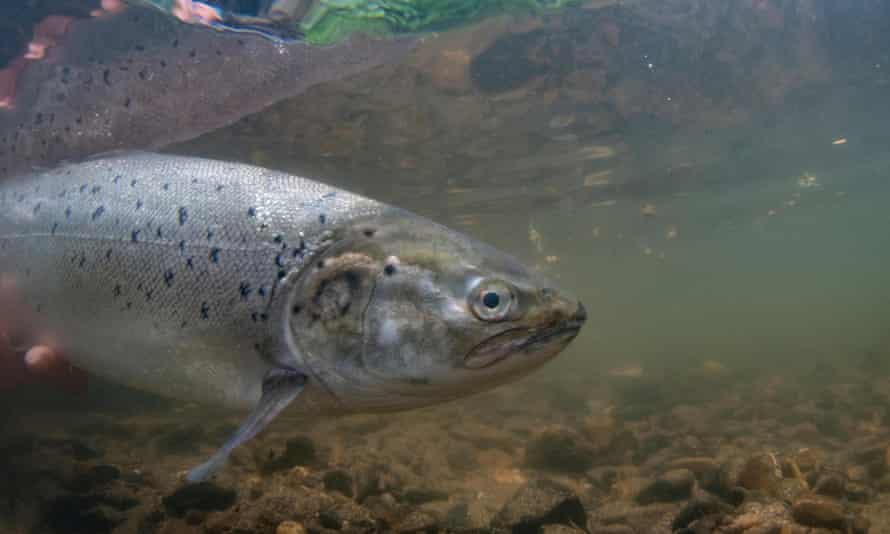Two of the UK’s oldest institutions – Eton College and trout fishing – are heading for an unexpected, watery confrontation. The battle has been sparked by an announcement by the GBP42,000-a-year boarding school that it plans to sell off 500 acres of East Sussex for a massive housing development. The move has triggered widespread anger, with infuriated members of the fishing community arguing that the proposal is a threat to one of the most important spawning grounds of the sea trout in England.
The proposed 3,000-house new town would be built at North Barnes Farm, near East Chiltington, at the edge of the South Downs National Park. The Bevern stream, part of the River Ouse catchment area, runs through the land and is a nationally important spawning ground for sea trout.
“If the Bevern got further polluted, the trout here could disappear – they could just go extinct in this particular stream,” said Sam St Pierre, vice- chair of the Ouse & Adur River Trust.
“And we’re not talking about acute pollution,” he added. “We’re talking about the kind of general low-grade pollution that you would get as run-off from urban development. If it degraded the spawning area, the sea trout could just disappear and a vitally important population could be wiped out.”
In addition, campaigners say many other species – including nightingales, mayflies, caddis flies and great-crested newts – could also suffer severe damage to their habitats by the development, a joint project by Eton College and Welbeck Land, which describes itself as “a strategic land promoter and master developer”.

According to a statement from the two organisations, their vision is to create a 21st-century small Sussex town at North Barnes Farm. They said that the site was the only one in the Lewes district that could accommodate “a new settlement of sufficient size to achieve genuine sustainability in the era of climate change”.
The plans being developed represent an innovative and sustainable response to the need for local housing and will have a town centre and a high street and four walkable neighbourhoods across the site “where most everyday needs can be met within 15 minutes’ walk or by cycle”, state Eton and Welbeck. “At North Barnes Farm we will … [provide] a full range of homes, for all ages, incomes and family groups.”
This will not be a dormitory town, full of executive homes, that empties in the morning as residents head off on long commutes, only to return in the evenings, the developers insist.
However, these claims get short shrift from many locals, with some accusing Eton – the alma mater of 20 prime ministers, including Boris Johnson – of displaying “sheer greed”. Those criticising the project include the local Conservative MP, Maria Caulfield. “The scale of the numbers of houses being proposed is completely inappropriate,” she told the Observer last week.
“Most villages round here have only a few hundred homes. So a whole new development with thousands of houses would be completely overwhelming. And then there is the fact that the national park is extremely close and would be affected by light pollution, fertiliser run-off and other environmental damage.”
The government has been supportive of housebuilding projects, however, having backed a target of building 300,000 homes a year to ease the housing crisis.

The ecological concerns also resonate with the local fishing community, whose particular fears concentrate on sea trout.
Sea trout and brown trout are the same species. However, while the latter never stray from freshwater, the former migrate to the sea to feed and to grow, and as a result tend to be substantially bigger than resident brown trout in the same river.
The Bevern, a chalk stream which rises in the South Downs and runs over gravelly beds, provides a perfect spawning ground for sea trout. Those that then spread into the Ouse catchment area are among the largest in the UK.
“Sea trout from the Ouse grow to be enormous fish – even 12lb fish are not uncommon. This makes the river unique. If you go to rivers elsewhere, the sea trout aren’t nearly as big,” added St Pierre.
And this is what worries conservationists. “The trout populations of the Ouse are recognised as being very special fish, and genetically distinct. Any additional pressures placed on the Bevern stream pose an existential threat to that population,” said Andy Thomas, a conservation officer for the Wild Trout Trust.
A 3,000-house development would cause sewage problems and raise the risk of abstraction which could cause the Bevern to dry up, it is argued.
“If the Bevern became unable to support trout, that would be a pretty large chunk of the trout population in the Ouse catchment area – and particularly sea trout as they’re fussy about where they spawn,” said Thomas.
“It’s the scale of this development that is the most horrifying aspect and we are very concerned that it would cause significant ecological harm.”
This point was summed up by Marc Munier, leader of the local campaign to block the development. “The development would have a catastrophic impact on the natural environment here. Trout are a flagship species in the Ouse catchment area, and their presence is a marker of the health of the river.
“Nothing would mitigate the irreversible damage that building a huge new town here would cause.”